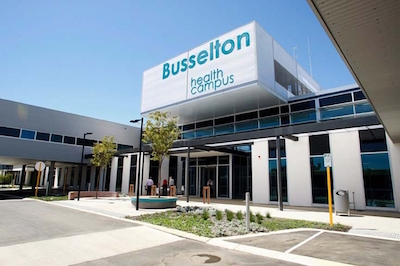
The two largest hospitals in the south-west region of the WA Country Health Service (WACHS) are set to begin using the BOSSnet electronic medical record from Core Medical Solutions (CMS), with 12 more hospitals in the region set to go live with read-only access later in the year.
Bunbury Hospital and Busselton Hospital will have full access to the BOSSnet EMR, which was first installed at the flagship Fiona Stanley Hospital in 2014. This includes its scanning function but also eForms, orders, results and alerts.

Trans-Tasman secure messaging vendor HealthLink is live with its SmartForms platform in more than 95 per cent of general practice sites in New Zealand and, as of the start of this month, is 50 per cent of the way towards its target of 8000 sites in Australia.
SmartForms technology is quickly being adopted as an efficient method of secure communication between healthcare providers, especially for referrals and medical certificates where filling out patient data can be time-consuming.
NSW Health's massive electronic record for intensive care (eRIC) roll-out got underway in practice this week, going live at Port Macquarie Base Hospital's (PMBH) intensive care unit, the first of 43 planned for the state.
Based on iMDsoft’s MetaVision 6 specialist critical care system, eRIC will be rolled out to all ICUs, NICUs and PICUs in NSW under a statewide contract awarded in 2013.
iMDsoft beat the likes of Philips Healthcare, GE and Cerner for the hotly contested tender for what was originally called the Intensive Care Clinical Information System (ICCIS), part of the government's $400 million blueprint for eHealth in NSW.

The federal government has committed to replacing the IT systems that handle Medicare, aged care and veterans' payments, but has insisted that operation of the new system will remain in public hands.
Health Minister Sussan Ley said a process had commenced today to identify solutions for a new payments system, which she said will be based on existing commercial technology. However, she provided no figures on the expected cost of the replacement or if any work done by an outsourcing taskforce earlier this year would be reused.

WA Health is trialling a new telehealth service at Royal Perth Hospital (RPH) and Princess Margaret Hospital for Children (PMH), offering a video calling system for outpatient clinics to Perth-based patients.
RPH has offered telehealth links between its specialists and rural hospitals and clinics for a number of years as part of WA Country Health Service's emergency telehealth service (ETS), and Fiona Stanley Hospital also has a thriving telehealth service for suitable rural patients.
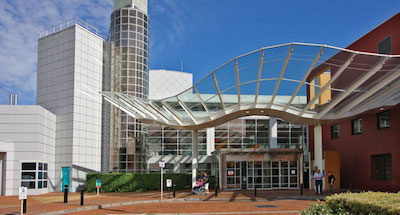
Healthshare NSW has issued a call for expressions of interest (EOI) from vendors to provide a new enterprise-level radiology information system and picture archive and communication system (RIS-PACS) for at least 10 local health districts (LHDs).
The new RIS-PACS will be a replacement for the current GE system for medical imaging and will be expected to interface with other NSW Health systems, including the Cerner electronic medical record (EMR), the various patient administration systems (PAS) in use, the billing solution (PBRC) and eHealth NSW's enterprise imaging repository (EIR).

App-based telehealth service MyOnlineClinic has won a contract with Ambulance Victoria to provide a telehealth option for its referral division, offering a new service model for low acuity presentations.
The company has also partnered with rural and regional medical centre group Tristar Medical to supply its telehealth needs, and is also working with residential aged care facilities and on- and offshore service companies to use its Bluetooth-enabled medical device offering for remote monitoring.

The Royal Australian College of General Practitioners (RACGP) is holding its second eHealth forum in Melbourne later this month, with electronic communication, clinical system usability issues and the growth in health data on the agenda.
The college is also running its annual survey on members' views and attitudes towards technological innovation in general practice, to help develop a snapshot of current trends in technology adoption.
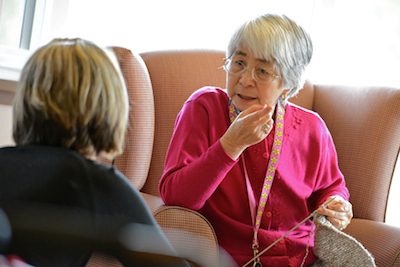
Tablet computer manufacturer Xplore Technologies has won a contact with the Royal Australian Air Force Association (RAAFA) to supply its Motion by Xplore rugged tablet computers to staff at RAAFA's five aged care facilities in WA.
Xplore, which bought healthcare hardware firm Motion Computing in September last year, is providing the C5m range to RAAFA, allowing the company to move not just its administration requirements but its patient record from a static to a mobile, on-the-go system.
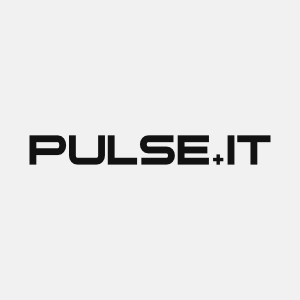
Pulse+IT's weekly round-up of international health IT and eHealth news for the week ending October 16:
Legal records lurking in EHRs add new wrinkle to malpractice lawsuits
Healthcare IT News ~ Diana Manos ~ 13/10/2016
Electronic health records platforms are leaving doctors exposed by making it hard to demonstrate what they did and why. Some providers are even settling malpractice suits and not because of guilt. Hospitals cannot ignore the issue anymore.
Precision Medicine Initiative expands with Geisinger, Partners HealthCare
Healthcare IT News ~ Bernie Monegain ~ 13/10/2016
The National Institutes of Health will add four groups of healthcare provider organizations to a national network designed to put the Precision Medicine Initiative Cohort Program to work.

The legislation enabling the creation of the National Cancer Screening Register (NCSR) has passed both houses of Parliament with a number of amendments concerning the disclosure of personal information, but extra amendments sought by the federal opposition were defeated.
The opposition this week attempted to add three amendments to the second reading of the bill, one of which would have forced an alteration to the contract awarded to Telstra Health for the design and operation of the register.

Sydney start-up MedSquared is looking for doctors to trial its new AirHealth telehealth platform, which uses a 'tuned' version of WebRTC to ensure solid video connections in rural and remote areas as well as one-click access for patients, an appointment scheduling system and the potential for a payment gateway using a Stripe API.
MedSquared, which is also behind the recent launch of the Bleep secure healthcare messaging platform, has developed the new platform to provide a simple alternative to technologies currently used such as the ubiquitous Skype or the VSee app.
Aimed squarely at helping improve access to specialists for people living in rural and remote Australia, it promises to be a full clinical telehealth platform with the ability to share consultation notes and clinical images in real time. A PDF transcript of the consult can be shared with the patient and attached to the doctor's medical record.

Sydney-based cloud practice management software vendor Clinic to Cloud (C2C) has signed a memorandum of understanding with Singapore's RingMD to offer its telemedicine platform to local specialists, complete with the Cardea health bot it has designed for Skype.
C2C, which has expanded its operations with clinics in Singapore, Malaysia and Vietnam, plans to integrate RingMD into its PMS for existing customers but also to offer the telemedicine platform, which uses the artificial intelligence-based Cardea bot to triage patients, to any doctor and for wider consumer use.
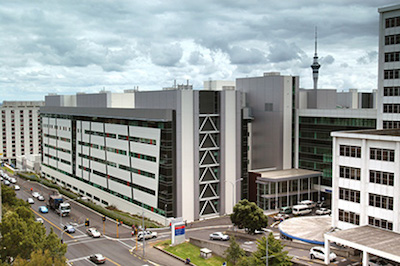
The preferred model for New Zealand's planned single electronic health record (EHR) is to create a national view of an individual's longitudinal record over time which would draw on regional solutions such as the South Island's HealthOne or the northern DHBs' proposed Northern EHR but would not include episodic medical information typically captured in a specialist electronic medical record (EMR).
According to a strategic assessment for establishing the EHR released this week by the NZ Ministry of Health, there is a preference in the industry to develop a longitudinal record that includes access to a wide set of health data via links and provides key information of value at the point of care, including diagnoses, medications, previous admissions, allergies and alerts.
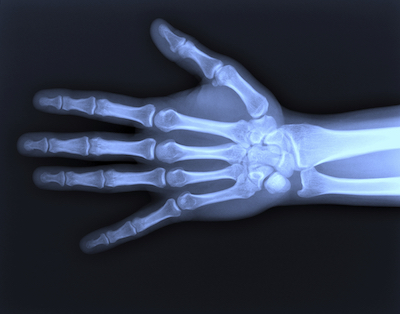
NSW Health has announced that it will be seeking expressions of interest for a new radiology information system and picture archive and communication system (RIS-PACS) as a replacement for current medical imaging systems, of which there are more than a handful in use throughout the state.
A number of existing RIS and PACS systems are used in NSW, with estimates of between nine and 11 different instances from the likes of GE, Siemens, Cerner and CSC currently in use. NSW Health says the new solution will be initially implemented for radiology, nuclear medicine, cardiology and other departments, with a wider scope covering ophthalmology, fetal medicine, dermatology, endoscopy, radiation oncology and vascular medicine possible in future.

The federal opposition today moved three amendments to the legislation enabling the National Cancer Screening Register (NCSR), including one requiring that its operation remain in the hands of the government or a not-for-profit only, which would fundamentally alter the contract signed with Telstra Health to build and operate the system.
Telstra Health was awarded the $178 million, five-year contract for the register in May, but the government failed to pass legislation establishing the new service before Parliament was dissolved for the federal election.

An electronic version of the second edition of the Society of Hospital Pharmacists of Australia's (SHPA) Don't Rush to Crush handbook is now available as additional optional content within the eMIMS Cloud drug reference and will be fully integrated into MedicalDirector's AusDI database later in the year.
Don’t Rush to Crush has been included in the Pharmacy Board of Australia’s list of essential references for pharmacy practice to provide clear, professional advice on the suitability of crushing a medicine.

State and territory health ministers have agreed to provide an update on progress towards the implementation of the Electronic Recording and Reporting of Controlled Drugs (ERRCD) real-time prescription monitoring system at a meeting of their advisory council in December.
It has been more than four years since a national approach to doctor shopping for prescription opioids and other drugs of addiction was first announced, but as Pulse+IT reported earlier this year, each jurisdiction had taken a different approach to the roll-out of ERRCD and some are understood to have been agitating for more money from the federal government before proceeding.

Using SNOMED CT for clinical decision support is the challenge of a hackathon being held as part of the international SNOMED CT Expo in Wellington on October 28 and 29.
Organised by the International Health Terminology Standards Development Organisation (IHTSDO) and the New Zealand Ministry of Health, the expo is aimed at health IT professionals, health practitioners, researchers, academics and vendors and is designed to be a showcase for what is becoming the common global language for health IT.

The organisation handling the roll-out of NZ's National Infrastructure Platform (NIP) on behalf of the 20 district health boards has refused to respond to questions about the status of the program, which was put on red-amber alert by the NZ Treasury in its major projects performance report in July.
The launch of the platform, being built by IBM and touted to save $23.9 million over 10 years, has been delayed twice due to adverse technical assessments. The project was given an amber/red alert by the Ministry of Health in the Treasury's most recent major projects performance report, citing “non-performance of the vendor.”

Pulse+IT's weekly round-up of international health IT and eHealth news for the week ending October 10:
Blockchain pilot to test its use in revenue cycle
Health Data Management ~ Fred Bazzoli ~ 05/10/2016
A platform to enable the use of blockchain technology in healthcare has been introduced, with an initial pilot project testing its use in the revenue cycle.
Low health literacy a potential hurdle to consumer HIT adoption
Fiercehealthcare ~ Susan D Hall ~ 06/10/2016
Low health literacy may pose a barrier to adoption of health IT, as well as perceptions of ease of use and usefulness of such tools, new research out of the University of Texas at Austin finds.

Pulse+IT's weekly round-up of Australian and New Zealand health IT and eHealth news for the week ending October 8:
Botched software upgrade stutters NBN satellite connections
ITNews ~ Allie Coyne ~ 06/10/2016
A botched software upgrade for the Viasat modems helping power NBN Co's satellite network last week has caused connection issues for rural and regional users.
Call for all providers to invest in disruptive technology innovation
Australian Ageing Agenda ~ Natasha Egan ~ 07/10/2016
Big data and wearables top the technologies set to transform aged care and all providers should be investing in innovation in this space, according to an aged care executive.

Queensland-based dose individualisation software firm DoseMe will launch a new dosing-data consulting business called DoseMe Crunch at HISA's Health Data Analytics conference in Brisbane next week.
DoseMe Crunch is built on the same algorithms that underpin the DoseMe platform of real-time dose-related decision support software.

Melbourne-based healthcare consultants Rob Beveridge and Steve Snow are set to launch a new online networking and education site for doctors called praxhub at the Gastroenterological Society of Australia's annual conference in Adelaide next week.
The duo describe praxhub as the first online platform for doctors to connect exclusively with other doctors in any other field, regardless of their physical location, specialty or availability.

Users of Global Health's ReferralNet secure messaging service are now able to send electronic correspondence to practitioners using Telstra Health's Argus network after the completion of a pilot project that has seen interoperability tested in the field.
While the delivery of secure messages is only one-way from ReferralNet to Argus at the moment, Global Health CEO Mathew Cherian said he hopes to see Argus subscribers being able to send correspondence to ReferralNet in the near future.

The Pharmacy Guild has recommended that community pharmacists be funded by the federal government to upload dose administration aid (DAA) profiles to the My Health Record system to provide a reconciled, up-to-date medications profile for high-risk patients living in both the community and in residential aged care.
The Guild has also called for the community pharmacy sector to be incentivised to integrate the My Health Record into their systems and workflows, and for dispense software vendors to be funded to develop an integrated controlled drug electronic register.

Publicly listed medications adherence technology firm MedAdvisor has begun the national roll-out of its GP Link tool, which is aimed at allowing patients to request a script renewal electronically and for GPs to monitor their patients' adherence to their medications.
Officially launched at the RACGP's GP16 national conference in Perth on the weekend, GP Link is a free tool for GPs that will be integrated into their practice management software and allow them to monitor how consenting patients stick to their regimen.

One of New Zealand's largest ever data science research initiatives kicked off today in Auckland, with the official launch of the $NZ37.8 million Precision Driven Health project led by Orion Health, the University of Auckland and the Waitemata District Health Board.
First announced earlier this year, the project aims to position New Zealand at the forefront of precision medicine and personalised healthcare on a global basis. The NZ government has chipped in $14m over seven years to the project, with industry partners and end users committing another $23.8m.

The decision to award Telstra Health a $178 million contract to build the National Cancer Screening Register in preference to the Victorian Cytology Service (VCS) has been described as 'surreal' by its executive director, but the organisation has accepted the decision and urged the government not to delay the roll out of the register for fear it may affect the renewal of the national cervical cancer screening program.
VCS executive director Marion Saville told a Senate Community Affairs legislation committee hearing in Sydney last week that when she received an email in March informing her that the service had missed out on the tender “it was a surreal” moment, particularly as the service had upgraded its own IT systems to handle the new human papillomavirus (HPV) testing regime that is set to replace Pap smears from May next year.

Melbourne-based workforce management software developer Mercury Group has signed up the South Australian and Tasmanian health departments to its online clinical credentialing platform, joining most of the other jurisdictions as well as Ramsay Healthcare in adopting the system.
The Mercury platform provides a portable profile for clinicians that they can maintain much like an online clinical CV. Health services are then able to validate their credentials, set their scope of practice and approve clinicians as credentialed.

The Department of Health has postponed planned public meetings and the preparation of a public consultation paper on the secondary use of data from the My Health Record (MyHR) system until next year.
DoH appointed consulting firm HealthConsult to help host the public meetings and develop a draft framework and implementation plan for the use of data from the MyHR system for research and public health purposes in August.

General practices taking part in the digital health Practice Incentives Program (ePIP) will have until January next year to upload three quarters' worth of shared health summaries to the My Health Record (MyHR) system, and those that have withdrawn from the incentive because they couldn't make the target are being encouraged to rejoin as soon as possible.
Payments will continue to be made on a quarterly basis but the full target does not have to be reached until January 31, 2017, the Department of Health says.

Pulse+IT's weekly round-up of international health IT and eHealth news for the week ending October 2:
Wachter calls for three-point IT implementation plan
Digital Health News ~ Laura Stevens ~ 28/09/2016
A successful implementation strategy, a network of clinical information professionals, and interoperable systems, should be the top three things on the government’s digital to-do list, according to Robert Wachter.
Connecting patients to ambulances with Flare
eHealthNews South Africa ~ Terri Chowles ~ 29/09/2016
Kenyan mHealth start-up Capsule Ltd has developed an app called Flare, which aims to make the country’s siloed and privately run ambulance service more accessible to patients.

Pulse+IT's weekly round-up of Australian and New Zealand health IT and eHealth news for the week ending October 1:
Pledge to open new Perth Children's Hospital 'before end of year'
ABC News ~ Jacob Kagi ~ 30/09/2016
WA Premier Colin Barnett has guaranteed the trouble-plagued new Perth Children's Hospital will open this year but still cannot say exactly when that will occur.
Pragmatic Kiwis refuse to buy into wearables hype: IDC
CIO NZ ~ Divina Paredes ~ 29/09/2016
Adoption of smartwatches and fitness wearables is growing year on year, but the latest IDC research suggests Kiwi consumers may already be over the initial hype of these devices.

General practices registered for the practice incentives program eHealth (ePIP) incentive have been given a six-month extension to the deadline for uploading shared health summaries to the My Health Record, after an estimated 1500 of the 5000 registered practices missed the target for the first quarter.
According to information obtained by the Australian College of Rural and Remote Medicine (ACRRM), the Minister for Health has agreed to a temporary amendment to the requirements for the ePIP, allowing practices to build towards the target by January 31, 2017, rather than in three separate quarterly targets.

Telstra Health has touted its technological capabilities and defended its role in the design and roll-out of the National Cancer Screening Register at a Senate Community Affairs committee hearing in Sydney today but has also admitted that the clinician directing the project has resigned.
Eminent pathologist Ruth Salom was recruited 18 months ago to help plan and design the register, which will automate and streamline the national bowel cancer screening program and the different state-based cervical cancer screening programs, but it was revealed today that she has submitted her resignation and the former CEO of Barwon Health, qualified GP David Ashbridge, has agreed to take over her role.

The Department of Health has withdrawn the supposedly anonymised set of MBS and PBS data it recently released into the public domain after cryptography and security experts from the University of Melbourne discovered some of the provider numbers it contains can be decrypted.
In a statement issued today, the department revealed that Vanessa Teague, a senior lecturer in Melbourne University's Department of Computing and Information Systems best known for her work on electronic voting, had alerted it that it was possible to decrypt some ID numbers, which are issued to doctors and other clinicians providing MBS and PBS-funded healthcare services.
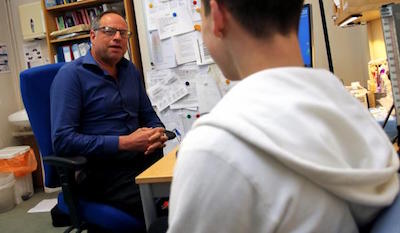
The federal Department of Health has issued a request for tender for a risk stratification tool, software and technical support to determine patients' eligibility for the Health Care Home program based on their disease complexity and predicted demand for unplanned hospital admissions.
The department is trialling the model from July next year in 200 general practices within the catchment of 10 Primary Health Networks (PHNs). Up to 65,000 patients are expected to take part in the trial, which will offer bundled payments to GPs for leading team care arrangements.

GP desktop software vendor MedicalDirector has added a clinical eAudit widget from mdBriefCase Australia to the MD Sidebar, allowing GPs to undertake continued professional development programs from within their software.
The new widget has been built to be used during a patient consult and offers six eAudits, each accredited for 40 category one CPD points. mdBriefCase Australia is accredited by both the Royal Australian College of General Practitioners and the Australian College of Rural and Remote Medicine.

eHealth Queensland is holding the first in a series of start-up and innovation showcases for emerging suppliers of new digital health solutions in October, with expressions of interest from suppliers due this Friday.
Judged by QH clinicians and administrators, the idea is to identify emerging solutions that would aid the design, delivery and management of healthcare services.

WA Health has issued an early notice that it plans to go to tender for a medical imaging informatics solution in November.
WA Health issued a request for information late last year as part of its strategic planning in the radiology informatics domain.

Critical care clinicians from US healthcare provider Emory Healthcare are being stationed at Sydney's Macquarie University Hospital and using Philips' eICU technology to remotely monitor critically ill patients back in Atlanta.
eICU is a well-established telehealth program in the US that uses a mixture of audio-visual technology and predictive analytics and data visualisation software called eCareManager to remotely monitor patients in ICU. The technology was first developed by Baltimore-based Visicu, which Royal Philips purchased in 2007 for $US430 million.
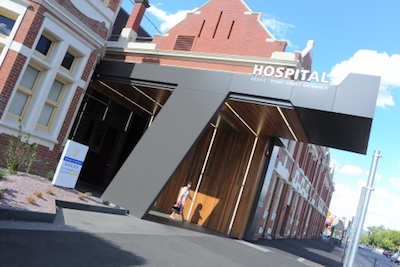
Victoria's Grampians Rural Health Alliance (GRHA) has confirmed it will roll out the BOSSnet clinical information system from Core Medical Solutions (CMS) across its 20-odd sites following a trial of the application at the Wimmera Health Care Group (WHCG) earlier this year.
WHCG's Horsham and Dimboola campuses signed on to implement BOSSnet in May to test drive the full expansion of the system across the Grampians footprint. The instance is an expansion of the BOSSnet implementation at Ballarat Health Services, which has used the system since 2009.

The national after-hours GP helpline (AGPH) may have prevented over a thousand unnecessary attendances at emergency departments due to medication-related concerns in one year but the general public's limited knowledge of the existence of the service may also have limited its effectiveness.
In a new study published in Australian Family Physician this month, Amina Tariq and colleagues from the Australian Institute of Health Innovation at Macquarie University have explored the actual use of the helpline, which is run by Healthdirect Australia on behalf of the federal government.

Secure messaging vendor HealthLink has signed an agreement with eye health clinical communications platform Oculo to help improve the referral workflow between GPs and optometrists, and tackle some of the unmet need in screening and diagnosis for common diseases such as diabetic retinopathy and glaucoma.
Oculo is an initiative of the Centre for Eye Research Australia (CERA), a not-for-profit medical research institute based at the Royal Victorian Eye and Ear Hospital, and was founded to address deficiencies in clinical communication between optometrists and ophthalmologists.

Specialists, midwives, physiotherapists and optometrists who currently refer patients to one of the three Auckland district health boards by fax or letter can now start using a web-based eReferral system in advance of electronic-only referrals being made mandatory in March next year.
The Auckland, Counties Manukau and Waitemata DHBs have made a collective decision to mandate that all referrals into their hospitals and clinics are electronic, starting in January next year for GPs and March for other healthcare providers.

Pulse+IT's weekly round-up of international health IT and eHealth news for the week ending September 25:
Plan needed amid 'confusing' funding for a digital NHS
Digital Health News ~ Ben Heather ~ 22/09/2016
The government’s plan to digitally transform the NHS is at risk of losing credibility as plans and funding remain “confusing”, The King’s Fund has warned.
Healthcare must move past outdated patient portals
FierceHealthcare ~ Katie Dvorak ~ 22/09/2016
Consumer engagement efforts must move to a more innovative place than where patient portals are today, and that means creating a platform that reaches all patients, according to a new Chilmark report.

Pulse+IT's weekly round-up of Australian and New Zealand health IT and eHealth news for the week ending September 24:
‘Dumbfounding’ failures at heart of WA health IT bungle
Computerworld ~ Rohan Pearce ~ 23/09/2016
An inquiry by a committee of the WA Legislative Assembly has called for the state’s health minister to report to parliament on why the Department of Health failed to utilise the government’s Gateway review process, in the wake of a major contract bungle.
WA Health Department issued warning over ICT contract governance
ABC News ~ Jacob Kagi ~ 22/09/2016
A West Australian parliamentary committee has warned more Department of Health information technology contracts could "spiral out of control", in the aftermath of revelations the agency blew millions on unused capacity and equipment.

The NZ Treasury has put IBM's contract to build the National Infrastructure Platform (NIP) for the 20 district health boards on high alert, with the project currently in a “rest phase” due to the service not being ready for deployment and the parties still to decide whether there is a viable way forward for the program.
Citing the “non-performance of the vendor” as a reason for putting an amber-red delivery confidence assessment on the project, the Treasury's major projects performance report (MPPR) for July, released this week, warns that successful delivery of the project requires urgent action and that the delay may have a flow-on effect on the $65 million National Oracle Solution (NOS), which is due to begin its roll-out to the DHBs early next year.

New Zealand's Health Information Standards Organisation (HISO) is looking for feedback on the timetable for its plans to migrate from the Read codes used in primary care clinical information systems to the SNOMED clinical terminology standard.
Read codes have been used by GP desktop systems in New Zealand since the mid-1990s, having been adapted from the UK, where they were first developed by in the early 1980s by GP James Read.

eHealth NSW has charged ahead with the roll-out of electronic medical records in NSW hospitals and multi-purpose clinics, implementing some sort of EMR capability in 104 sites during the 2015-16 financial year and with 73 per cent of NSW Health clinicians now using an EMR to provide care.
The state is also set to complete the mammoth Health Wide Area Network (HWAN) upgrade in the remaining rural Local Health Districts (LHDs) by the end of the calendar year, and will continue the roll-out of the HealtheNet system, which has now been implemented in 195 hospitals and is used to connect to the My Health Record and to send discharge summaries to GPs.
eHealth NSW CEO/CIO Zoran Bolevich told an Australian Information Industry Association forum in Sydney today that while the agency was well resourced to the tune of between $150 to $170 million a year, it had a huge scope of work on at the moment, running 24 different programs across six portfolios.

It's early days yet for Queensland's ambitious, four-year, $361 million specialist outpatients strategy but an eHealth Queensland project team is already working on assessing requirements and the potential design for a statewide, end-to-end, integrated electronic referral solution that will see GPs better supported in referring to the state's tertiary hospitals.
eHealth Queensland is also planning to run co-design workshops with GPs, through their primary health networks (PHNs), on how they might be able to access Queensland's The Viewer read-only app in advance of the technology being integrated into their desktop software.

The Royal Australian College of General Practitioners (RACGP) wants all healthcare services and government agencies that communicate patient information with general practices to do so by secure electronic means within the next three years, calling for the final chapter to be closed on the era of the letter and the fax machine.
The RACGP has released a position statement on the use of secure electronic communication within healthcare, calling for it to be the “preferred and default” method of communication for all health services and government agencies communicating with general practice about patients.

Unexpected problems with several software packages, expired National Authentication Service for Health (NASH) PKI certificates and ongoing connectivity failures are just some of the reasons why up to 1500 general practices failed to reach the shared health summary upload target for the practice incentives program eHealth incentive (ePIP), Pulse+IT has learned.
The Australian Medical Association revealed last week that up to 30 per cent of practices enrolled in the PIP were likely to miss the target for the first quarter, which requires them to upload a certain amount of shared health summaries to the My Health Record (MyHR) per GP per practice.

The developers behind a new secure messaging platform called Bleep that has been inspired by the Slack messaging app for team communication are looking for doctors, nurses and other healthcare professionals to try out the beta version, which is aimed predominantly at multi-disciplinary teams working in busy hospital wards and potentially at residential aged care facilities.
Developed by Sydney firm MedSquared and its founders Joe Logan, a doctor, and Sarah Humphreys, a health IT specialist, Bleep has been designed to provide a convenient and easy to use platform for improving communication, and includes text and clinical image capabilities as well as a task manager that clinicians can use to see what tasks other team members have called for or completed.

The CALD Assist app developed by speech pathologists at Western Health's Sunshine Hospital has received extra funding from the Victorian government to be rolled out to nursing staff and for further development work so it can be implemented at all hospitals that are interested in using it.
Victorian Health Minister Jill Hennessy announced last week that Western Health will receive more than $270,000 from the $10 million Better Care Victoria Innovation Fund for the app, which allows healthcare workers to communicate with people from a culturally and linguistically diverse (CALD) background when an interpreter is not available.

New Zealand's Orion Health has poached Peter McCallum, the former head of data and insights at Spark's data solutions company Qrious, to head up its Auckland-based analytics team as part of the company's push into precision medicine and big data.
Orion Health is embarking on a hiring program to build its analytics capability, with Mr McCallum calling for software engineers with experience in Apache Spark, ElasticSearch, Cassandra, Java, Scala, Python or R to get in touch.

Clinical and practice management software vendor Best Practice has bought allied health software developer myPractice, adding its predominantly Australian customer base to Best Practice's expansion plans in the allied health and specialist medical software markets.
myPractice's founder and director Glen Germaine and his development team are based in Hamilton in New Zealand, with operations in most Australian states and a head office in Lake Macquarie, NSW.
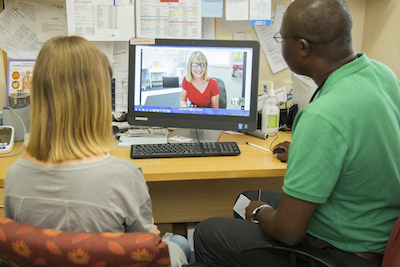
Paediatric outpatient diabetes clinics, online drug and alcohol recovery services and a project that uses telehealth to give rural clinicians access to intensive care experts are three of the first 15 projects to receive funding under the Victorian government's $10 million Better Care Victoria Innovation Fund.
Victorian Health Minister Jill Hennessy announced last week that funding will be used to make it easier for patients living in Gippsland to attend an outpatient appointment at home or at their local general practice.

The Australian Digital Health Agency (ADHA) has put out a call to the healthcare sector to join one of five advisory committees that will advise the board on shaping the agency's work.
The advisory committees cover clinical and technical, consumer, privacy and security, audit and risk, and digital health safety and quality governance. Charters outlining the focus of each committee are available on the ADHA website.

Pulse+IT's weekly round-up of international health IT and eHealth news for the week ending September 18:
NHS Digital to roll out new CareCERT cyber security services
Digital Health News ~ Jon Hoeksma ~ 15/09/2016
NHS Digital is to start rolling out its expanded portfolio of CareCERT cyber security services across health and social care.
Nearly 60 percent of US smartphone owners use phones to manage health
MobiHealthNews ~ Heather Mack ~ 15/09/2016
Even in the face of privacy concerns, Americans are increasingly sharing medical information, sending photos to their doctors, using fitness or activity trackers, and using AI to become active players in their healthcare.

Pulse+IT's weekly round-up of Australian and New Zealand health IT and eHealth news for the week ending September 17:
Defects and delays keep Royal Adelaide Hospital on critical list
The Australian ~ Rebecca Puddy ~ 16/09/2016
Today the doors of the nation’s most expensive building, the imposing 10-storey Royal Adelaide Hospital, standing tall on the banks of the River Torrens, should swing open to receive patients.
SA Health staff failed to read group email regarding chemotherapy underdosing
ABC News ~ Angelique Donnellan ~ 16/09/2016
An email sent to cancer clinicians highlighting an underdosing error of chemotherapy treatment at the Royal Adelaide Hospital went largely unread, a report to the bungle has found.
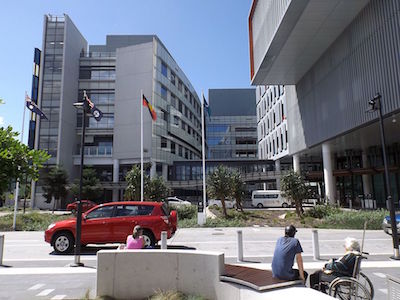
The Queensland government has passed a legislative amendment that will allow GPs to have access to patient information such as hospital test results and medications through Queensland Health's The Viewer read-only clinical portal.
The amendments to the Hospital and Health Boards Act 2011 are part of the government's $361 million specialist outpatient strategy launched earlier this month, which aims to reduce waiting times for outpatient appointments.

Former MedicalDirector CEO and executive director Phil Offer has left the company, four months after the sale of the market-leading general practice clinical information system to a private equity firm for $155 million.
Cambridge University-educated Mr Offer took over the reins at what was formerly known as Health Communication Network (HCN) in 2013, some time after the departure of former long-term CEO John Frost.

The longest-serving secretary of the federal Department of Health, Jane Halton, has resigned from the Australian public service, two years after taking up a job as secretary of the Department of Finance.
According to The Mandarin, her former deputy at Health, Rosemary Huxtable, who has been serving as Ms Halton's deputy at Finance, will act in the role from October 15 until a permanent replacement is appointed.

General practices among the 1500 that are suspected to have not met the quarterly target for the digital health practice incentive program (ePIP) are not likely to be penalised if they have made a genuine effort to comply with the new requirements, the Department of Health says.
The Australian Medical Association (AMA) revealed yesterday that up to 1500 of the 5000 general practices that are enrolled in the ePIP are unlikely to have uploaded the required amount of shared health summaries to the My Health Record system.

Australian software developer Bryn Lewis has won an international challenge set by HL7 International to make the rendering of consolidated clinical document architecture (C-CDA) documents easier for clinicians.
Dr Lewis, who works with Melbourne-based healthcare software development firm Intelsoft, which makes a web-based clinical audit data analysis system called WebQI, put forward the open source Intelsoft C-CDA Viewer, an easy-to-use viewer of complex C-CDA documents that is available in any web browser.

GPs, pharmacists and community nurses in the Southern District Health Board catchment will have access to the HealthOne shared patient records system later this month, part of a South Island-wide roll-out of the system.
Almost 90 per cent of GPs covered by WellSouth PHO have signed up to HealthOne, which will give them access to some clinical information from Southern DHB hospitals such as discharge summaries from within their practice management system. Pharmacists can access it through their dispensing systems.

The Senate community affairs legislation committee will hold a quick-fire inquiry into the two bills establishing the National Cancer Screening Register, with Labor set to propose amendments to the bills insisting that the operation and control of the register remain in the hands of the government.
Telstra Health was awarded the $178.3 million contract to build and operate the register, which will move the current national bowel cancer screening program to an electronic from a paper-based system and bring the state and territory cervical cancer screening programs together, in May.
Telstra Health has already begun work on designing the system, meeting with the Department of Human Services and the states and territories to document business processes. It has also met with pathology providers and with general practice representatives to discuss integrating the system into GP software.

Almost one in three general practices claiming the digital health practice incentives program (ePIP) payment have failed to meet the required number of uploaded shared health summaries to the My Health Record, the AMA says, but despite dire warnings of a mass revolt, only 69 practices have formally withdrawn from the program.
Almost 5000 general practices claim the ePIP – which can total up to $50,000 in payments per practice per year – but the AMA's figures show that just 69 have refused to participate further. However, the organisation is warning that the 1500 practices who have failed to meet the upload target for the first quarter may lose the incentive and leave some of them $20,000 worse off, or even be forced to repay some money.

Telstra Health is using the Spine data collection technology developed by its CloudMed subsidiary to power the new Elicio health intelligence platform being launched by the Improvement Foundation (IF), which will collect and aggregate data from disparate sources in real time for regional, state and national-level integrated care programs.
Spine is able to collect data from general practice, pharmacy, hospital and aged care software, aggregate it and analyse it in real time. It can be used to create a longitudinal view of a patient's journey but in the case of Elicio, it will also be used in association with the IF's data sets to allow clinicians to benchmark their organisation and identify gaps, and for improved care delivery.
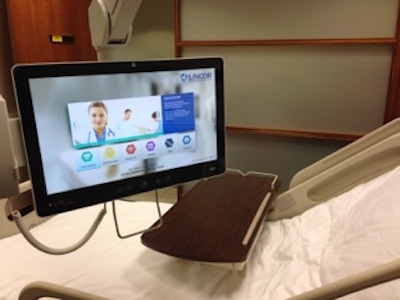
ASX-listed technology firm Hills Ltd plans to spin out its Hills Health Solutions division in a merger with Irish patient infotainment system vendor Lincor, with the combined company's integrated patient bedside and nurse call technology set to go live throughout the new Royal Adelaide Hospital when it opens later this year.
Hills Health Solutions (HHS) distributes the Lincor range in Australia and New Zealand and also owns nurse call system brands Merlon and Questek and patient infotainment vendors Hostel and HTR. It also distributes the Sonitor range of real-time location services (RTLS) solutions.

Department of Health secretary Martin Bowles has set up a Medicare and aged care payments division to take over from the digital payments services taskforce that became a major talking point during the federal election campaign, AAP is reporting.
The department established the taskforce at the start of the year to look at how to modernise the Medicare payments systems, which process billions in payments for the MBS, PBS and Commonwealth-funded aged care services every year. The idea was initially put forward by former health minister Peter Dutton in 2014, with a small amount of funding allocated in the 2014 budget.

Clinical and practice management software vendor Best Practice has released its long-awaited Lava edition, which includes a brand new reporting module, new My Health Record functionality, improvements for multi-location practices and integrated SmartForms capability from HealthLink.
The Lava version of Bp Premier has almost 900 new items and also includes improvements to device integration and document handling, as well as more patient information through HealthShare integration and John Murtagh’s patient information sheets.

Natasha Fyles has been appointed as the Northern Territory's Minister for Health in the newly elected Labor government, adding the portfolio to a potpourri of other responsibilities.
Ms Fyles, a former teacher, has also been named as Attorney General and Minister for Justice. She will be assisted in the role of health minister by Lawrence Costa, who has been appointed Assistant Minister for Remote Health Delivery and Homelands.
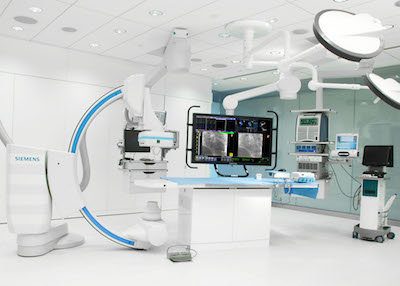
Pulse+IT's weekly round-up of international health IT and eHealth news for the week ending September 11:
St. Jude lawsuit: Muddy Waters-MedSec report is false, manipulative
FierceHealthcare ~ Dan Bowman ~ 08/09/2016
A lawsuit filed Wednesday by St. Jude Medical Inc. calls accusations leveled against the company by investment firm Muddy Waters Capital and security company MedSec for selling unsecure cardiac devices false and manipulative.
Caldicott: future of patient opt-outs a 'challenge'
Digital Health News ~ Ben Heather ~ 08/09/2016
Existing schemes to allow patients to opt-out of sharing their health data will not be immediately affected by the third Caldicott report but their future is far from assured.

Pulse+IT's weekly round-up of Australian and New Zealand health IT and eHealth news for the week ending September 10:
With Series 2, Apple admits its smartwatch isn't for everyone
stuff.co.nz ~ Paresh Dave ~ 10/09/2016
Two years ago, Apple Inc. executives made the case that anyone with an iPhone would be better off also owning the company's new smartwatch.
Bill Morrow calls for businesses to develop their ‘NBN strategy’
Computerworld ~ Rohan Pearce ~ 09/09/2016
Australia is on a fast track to become “the world’s first fully connected continent,” NBN’s CEO, Bill Morrow, will today tell an event hosted by the Australia-Israel Chamber of Commerce (AICC).
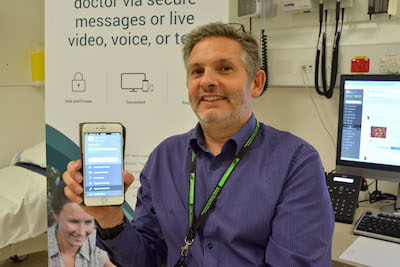
Waikato District Health Board is running a six-month trial extending its Virtual DHB initiative to offer a free out of hours doctor service, in which registered patients can message a doctor and set up a video consultation in the evening or on the weekend.
The trial is using technology from US firm HealthTap, which allows patients to connect to their hospital clinician for text or video consultations through a website or the HealthTap app on their smartphone or tablet.

Former Intel technologist and patient advocate Eric Dishman will headline the upcoming Health Data Analytics conference in Brisbane, appearing by video conference to explain the US Precision Medicine Initiative (PMI) cohort program that is aiming to build a longitudinal research study of one million volunteers to study the use of precision medicine in improving health and treating disease.
The conference, being hosted by the Health Informatics Society of Australia (HISA) in Brisbane next month, will also feature a keynote speech on how to use the SMART on FHIR set of specifications to write apps for clinical data, as well a debate on the cybersecurity strategy – or lack thereof – of Australian healthcare organisations.

The My Health Record is not an ivory tower project but one that Australia must and is beginning to embrace as it reaches a tipping point in the next year or so, but the healthcare sector could also do with a “bonfire of the faxes” similar to that which has helped transform other industries, Australian Digital Health Agency (ADHA) CEO Tim Kelsey says.
In some of his first public remarks upon taking up the high-profile role, Mr Kelsey told the Committee for the Economic Development of Australia (CEDA) in Brisbane recently that the modernisation of healthcare through the implementation of digital technology was now the single most important public policy agenda.

Clinical codes and content such as SNOMED CT, the Australian Medicines Terminology (AMT) and LOINC can now be delivered to software vendors using the emerging HL7 FHIR standard, promising to massively streamline the process of finding and updating codes and providing a one-stop shop for most terminology needs, no matter what the format.
Under a joint project between the Australian Digital Health Agency (ADHA) and the CSIRO's Australian E-Health Research Centre (AEHRC) announced late last year, the clinical software community is being provided with a number of tools for implementing and using clinical terminologies, including CSIRO's Snapper mapping tool, its Ontoserver terminology server and the Lingo authoring tool developed by the ADHA's predecessor, NEHTA.
Now, the agency's National Clinical Terminology Service (NCTS) is set to make using and integrating the terminologies far easier by delivering content via a FHIR API, which will allow vendors to automate the downloading and refreshing of code systems rather than manually having to do it depending on release cycles.

There may be some disruption to Medicare services provided by the Department of Human Services (DHS) tomorrow as public sector workers take industrial action over a long-standing dispute with the federal government over its enterprise agreement policy.
DHS general manager Hank Jongen said Medicare customers may be affected by planned industrial action by the Community and Public Sector Union (CPSU).
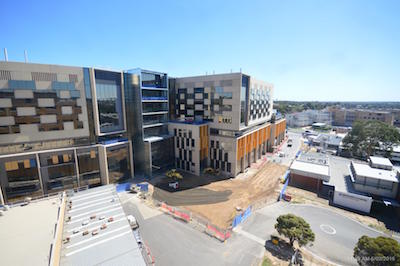
The Victorian government has named three regions chosen to pilot the state's $3.1 million eReferral program, which will trial the use of different secure messaging systems and create uniform referrals based on the National eReferral Reference Architecture (NeRRA).
Victorian Health Minister Jill Hennessy announced in April that the state budget would allocate money towards the program, which will trial eReferrals in the community and to the acute care sector.

Wearable device developer mCareWatch will launch the latest version of its technology for older people next week, complete with a new name inspired by the Greek goddess of safety.
The mCareWatch SMW16 ‘Soteria' is a watch, mobile phone, personal emergency alarm, GPS and activity tracker and can be used to monitor and record a range of biometric measures.

The use of the ProjectSTOP real-time electronic recording program for tracking pseudoephedrine sales from community pharmacies in WA has seen a steady decline in total requests for products containing pseudoephedrine, and when combined with other restrictions, could help inform the control of other medicines with potential for abuse, such as over-the-counter (OTC) codeine, a new study shows.
The study by Curtin University researchers, published last week in the journal Substance Abuse Treatment, Prevention and Policy, found that the voluntary introduction of ProjectSTOP in 2007, which was then made mandatory in 2010, saw a small but steady decline in the total requests for pseudoephedrine per month per 100,000 population per pharmacy.

GP referrals will be submitted by secure electronic messaging to Queensland’s largest public hospitals and patients will have access to an online specialist appointments management system under an ambitious, four-year, $361 million plan by the Queensland government to provide more outpatients appointments and reduce waiting times.
Under the plan, Queensland GPs will also have the ability to access components of their patient’s public hospital medical record by 2018, access to an online statewide directory of public hospital services to better inform and direct their referrals by 2020, and will also be supported with new clinical decision support tools called clinical prioritisation criteria (CPC) to ensure standard and comprehensive information is included in their referrals.

Melbourne-based software vendor Global Health has signed a three-year agreement with area mental health service Mercy Mental Health to deploy its MasterCare electronic medical record system along with the ReferralNet secure messaging platform and the ReferralNet e-switch enterprise integration broker.
Mercy Health, which covers the western suburbs of Melbourne, is the second area health service in Victoria that will implement MasterCare for mental health, following a similar roll-out across South West Healthcare in 2014.

The NSW Ministry of Health's health and social policy branch has issued a request for tender for a consultancy to conduct a review of health information services provider Healthdirect Australia.
Healthdirect Australia is a public company jointly funded by the federal, state and territory governments that provides telephone and online health advice as well as managing the My Aged Care website and the National Health Services Directory. It also works with the jurisdictions on telehealth provision.

The Deeble Institute for Health Policy Research recently published an issues brief (PDF) by Gordon et al that considered the challenges of producing reliable national datasets from patient electronic health records (EHRs) maintained by general practice.
One of the issues raised in this issues brief was the importance of using standardised clinical terminology across the many practice management software packages currently being used in Australia, with the authors recommending that all terminologies should be mapped to SNOMED CT-AU.

The Improvement Foundation (IF) is set to launch a new data intelligence platform in association with Telstra Health that it says will transform the way that data is collected and accessed from medical software systems.
Called Elicio, the new system will directly collect and aggregate real-time data from general practices, hospitals, pharmacies, radiology and aged care software systems.

Clinical and practice management software vendor Best Practice has partnered with McGraw-Hill Education to add John Murtagh’s patient information sheets to the education leaflets section of Bp Premier.
Written by the GPs's GP John Murtagh, emeritus professor of general practice at the University of Melbourne and author of the John Murtagh's General Practice textbook, the patient education material will be available as part of the annual Bp subscription.

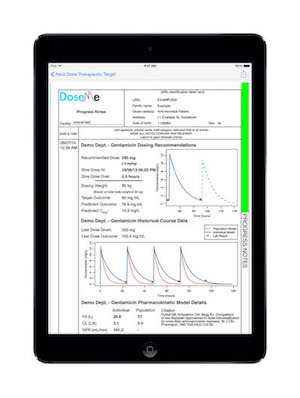
A GPS-like indoor positioning system called LiPo developed by the University of South Australia that uses light to triangulate a person's position and has potential in aged care and hospitals has taken out one of the major categories at the iAwards.
Brisbane's DoseMe, which has developed a medications dose individualisation app, also picked up a minor medal, as did the snoMAN mapping system developed by the Australian E-Health Research Centre and the Princess Alexandra Hospital to map clinical terminologies from the hospital’s EMR.
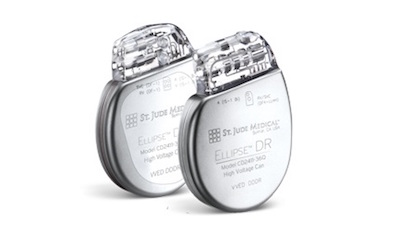
Pulse+IT's weekly round-up of international health IT and eHealth news for the week ending September 4:
Carson Block's attack on St Jude reveals a new front in hacking for profit
Bloomberg ~ Jordan Robertson ~ 26/08/2016
When a team of hackers discovered that St. Jude Medical Inc.’s pacemakers and defibrillators had security vulnerabilities that could put lives at risk, they didn’t warn St. Jude. Instead, the hackers, who work for cybersecurity startup MedSec, e-mailed Carson Block, who runs the Muddy Waters Capital LLC investment firm, in May. They had a money-making proposal.
DoD delays Cerner EHR modernization
Healthcare IT News ~ Bill Siwicki ~ 01/09/2016
The U.S. Department of Defense said it is pushing back its giant $4.3 billion EHR modernization project with Cerner at least a few months.
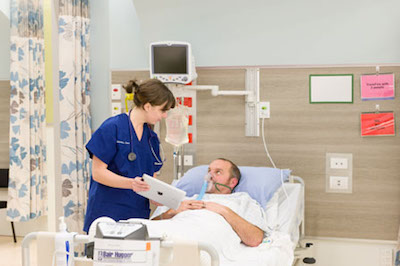

The New Zealand government is currently working on a plan to develop a single electronic health record for all of its citizens, and while it is unlikely the country will follow Australia's lead in building one from the ground up, Wellington could do worse than looking at its own doorstep for a clue on how to build a functioning EHR without going to massive expense.
In the South Island, the Canterbury District Health Board (DHB) has in the last five years built just such an EHR from disparate sources, bringing primary care information together with secondary care and soon to allow patients to see their records through a patient portal. It is also now working on a unified medications list that is updated in real time, so paraphrasing another famous Kiwi export, there will be one list to rule them all.

South Australia has issued a request for information for a new billing solution that can support fee-for-service payments for doctors providing public inpatient services in Country Health SA Local Health Network facilities, including rural hospitals, residential aged care facilities and multi-purpose services.
The new solution will replace the patient administration system (PAS) fee-for-service (FFS) module, currently used by 220 CHSALHN sites, which involves a semi-automatic interface that extracts and transfers patient data such as episode details from the Chiron PAS into an Oracle financial system to finalise and process the payment.

The Deeble Institute recently released a position statement written by the former leaders of the BEACH general practice data program calling for better structures to ensure reliable national data from general practice electronic health records (EHRs).
Since then, there have been follow-up articles in Pulse+IT about the plans software vendors Best Practice and MedicalDirector have for integrating Systematic Nomenclature of Medicine (SNOMED) into their systems, which already goes to one of the recommendations.

Medications adherence platform vendor MedAdvisor is planning to go to the market to raise capital to buy Healthnotes, a pharmacy software platform that offers similar capabilities but with added ties to residential aged care.
MedAdvisor has entered into an agreement with parent company Health Enterprises 2 to buy it outright for $5.5 million, with the aim of boosting MedAdvisor's share of connected community pharmacies from 1600 to over 2400, patient numbers to over 500,000 and nursing homes to 1700.

Health Minister Sussan Ley will introduce a bill to establish the new National Cancer Screening Register (NCSR) for cervical and bowel cancer screening to Parliament this week.
While the announcement of Telstra Health as the winning contractor caused a furore in some media outlets in May, legislation allowing for the operation of the register and data migration from existing state-based cervical cancer programs lapsed due to the dissolution of Parliament for the July federal election.
Copyright © 2025 Pulse IT Communications Pty Ltd. No content published on this website can be reproduced by any person for any reason without the prior written permission of the publisher. If your organisation is featured in a Pulse+IT article you can purchase the permission to reproduce the article here.
Website Design by Get Leads AU.